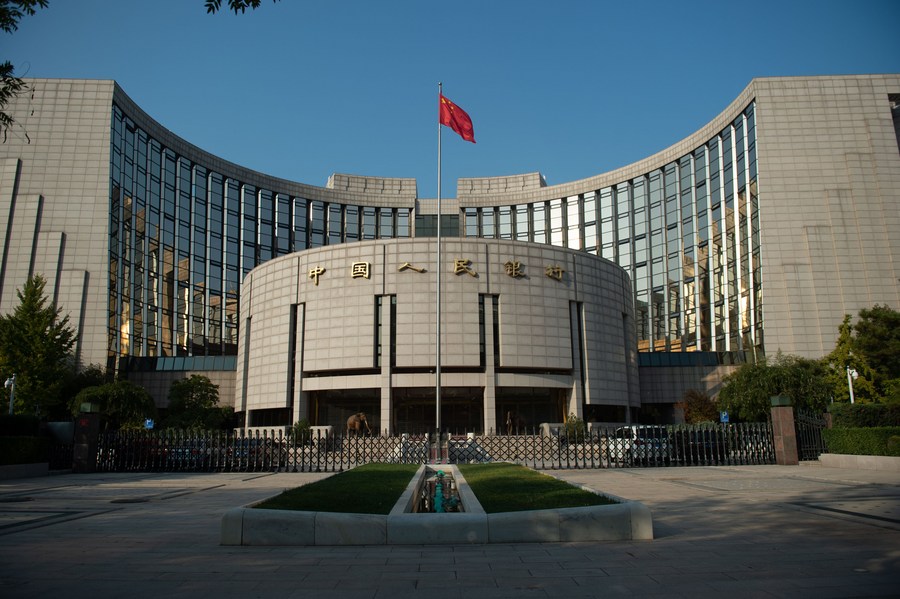
Photo taken on Oct. 19, 2020 shows an exterior view of the People's Bank of China in Beijing, capital of China. (Xinhua/Peng Ziyang)
BEIJING, June 20 (Xinhua) -- China's market-based benchmark lending rate was lowered for the first time since last August amid efforts to strengthen counter-cyclical adjustment and shore up post-COVID recovery.
The one-year loan prime rate (LPR) came in at 3.55 percent Tuesday, down from the previous reading of 3.65 percent, according to the National Interbank Funding Center.
The over-five-year LPR, on which many lenders base their mortgage rates, was lowered by 10 basis points to 4.2 percent.
The monthly-released data is a pricing reference rate for banks and is based on rates of open market operations of the People's Bank of China, the central bank, especially the medium-term lending facility (MLF) rate.
The central bank cut the interest rate of its one-year MLF from 2.75 percent to 2.65 percent on Thursday.
The central bank also cut two policy rates last Tuesday. It lowered the seven-day reverse repo rate for the first time since last August from 2 percent to 1.9 percent and announced a cut on the interest rates of its standing lending facility, with the overnight rate down by 10 basis points to 2.75 percent.
The LPR cut on Tuesday was in line with market expectations, analysts said, noting that commercial banks' cost of lending and capital have been lowered following the deposit rate, reserve requirement ratio, and policy rate cuts earlier.
Dong Ximiao, the chief researcher at Merchants Union Consumer Finance Company Limited, said the banks have the internal need to stabilize credit supply as the country has seen an unstable macroeconomic recovery with insufficient effective financing demand since the beginning of the year.
The decision of the U.S. Federal Reserve in June to postpone the interest rate hike also provided a more favorable external environment for China to adjust its monetary policy.
Analysts said the LPR cut would lift market expectations and support economic growth in several ways.
Zeng Gang, director of the Shanghai Institution for Finance and Development, said the policy rate cuts led to this month's LPR cut, effectively driving down actual loan interest rates, reducing financing costs, stimulating credit demand, and strengthening consumption and investment growth momentum.
The lowered LPR will be conducive to counter-cyclical adjustment, stabilizing growth, and shoring up confidence, said Wen Bin, the chief economist of China Minsheng Bank.
A State Council executive meeting on Friday mulled measures to promote sustained recovery of the economy, centering on four aspects - improving macroeconomic policies, expanding effective demand, strengthening and optimizing the real economy, and preventing and resolving risks in key fields.
Analysts expect more measures on stabilizing growth, and subsequent monetary, fiscal, industrial, and employment policies would strengthen to bolster confidence and recover demand.




 A single purchase
A single purchase









